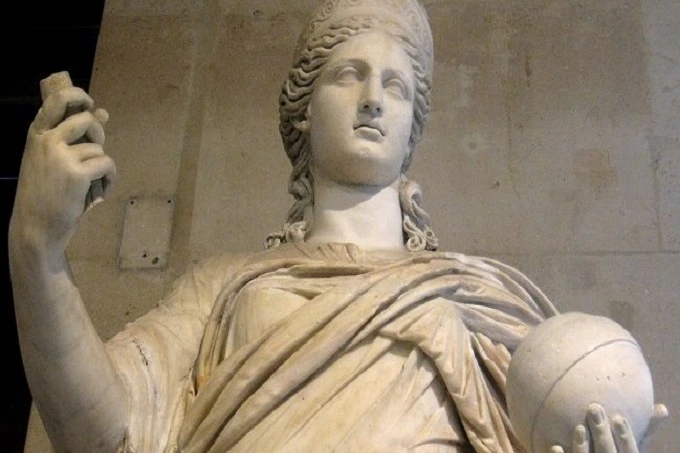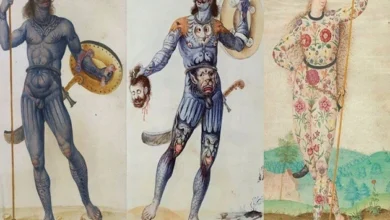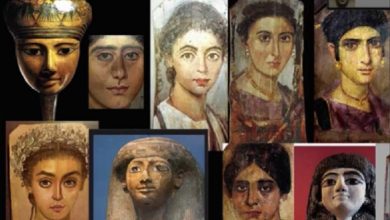Capitoline Triad: What gods did ancient Rome worship and believe in?

Religion serves as an essential pillar for many different kinds of communities, both ancient and contemporary. Religion served as the foundation for some of Rome’s most fundamental ideas in ancient times. This affected day-to-day living in ancient Rome, but it also influenced the architecture and surroundings of that time. Polytheistic religion was practised in ancient Rome from the very beginning of the city’s existence; yet, the nature of Roman religion underwent inevitable changes during the course of the empire’s existence, which ushered in new ways of life for its population. In the next section of the article, we will discuss the religious beliefs of the ancient Romans.
Polytheistic belief system
Polytheistic was the dominant religious practise in ancient Rome from the very beginning. This included the veneration of many gods and spirits, many of whom were thought to be the reincarnated spirits of ancient Roman ancestors. The people of ancient Rome believed, among other things, that the gods had a hand in establishing Rome’s foundations. As a result, they found the Capitoline Triad to pay homage to the city’s founders, who included Jupiter, the god of everything, Mars, the god of war and the father of Romulus and Remus, and Quirinus, the first king of Rome.
Greek gods in ancient Roman religion

The ancient Romans adopted a significant number of gods and goddesses originally found in Greek mythology. This was because there were numerous Greek colonies on the lower peninsula of Rome, whose ideas penetrated Roman society. As a result, Greece had a significant influence on Roman civilization. Most Roman gods had a Greek counterpart, often sharing the same name or function. For instance, Jupiter was the counterpart of Zeus in Roman mythology, while Minerva was the Roman equivalent of the Greek goddess Athena, who was worshipped as the goddess of battle.
Minerva was more than simply the Roman counterpart to Athena’s goddess in Greek mythology. She was an ancient goddess whose roots may be traced back to the Etruscan culture that was indigenous to Italy. Minerva was first known by her Etruscan name, Menrva, and she was the daughter of Tinia and Uni, the king and queen of the gods.

It is also broadly accepted that Minerva was the goddess of both war and the weather, and she is often shown as throwing bolts of lightning. This served as a clear differentiation between Minerva and Athena, who were never associated with the weather. The artwork of Italian painters who were influenced by Greek culture in the sixth century BC led to the growing association of the figure of the fierce Menrva with Athena. She was eventually incorporated into the official Roman religion as the goddess Minerva, who was revered for both her wisdom and her war might.
Minerva was an important part of the Capitoline Triad; nevertheless, there is no proof that she ever lived in Rome until she was included in the group. Once again, the Etruscans were responsible for transmitting this celestial conglomeration, which consisted of Jupiter, Juno, and Minerva. It was thought that these three gods guarded Rome from inside the Capitoline Temple, which was located on Capitoline Hill.
As was the case with Athena on the Acropolis, worship to Minerva took place on the Capitol, particularly during times of war. In the first year of the Republic, 509 BC, the temple itself was honoured by being dedicated to the Triad. It began to be seen as representing Rome’s newly won independence from monarchical control. After completing successful conquest expeditions, smaller replicas of the temple were also constructed in more distant regions, such as Africa. After being honoured with triumphal processions around Rome, the triumphant commanders were making their way to the Church on the Capitoline Hill. Here, in appreciation for Minerva, Juno, and Jupiter’s help throughout the conflict, the people made offerings to the three gods.

During the time of the Republican government in ancient Rome, the worship of Minerva, the goddess of battle, was at an all-time high. According to the account written by Pliny the Elder, the Temple of Minerva in Rome was constructed about the year 60 BC by Pompey, a prominent politician and military commander. After returning after a victorious military campaign in the empire’s east, he made a religious tribute to the goddess consisting of all of the treasure he had acquired during his expedition.
Many historians think that by the end of the Republic, Minerva had begun to eclipse Mars in his role as the god of war. The Quinquatrus Festival, which took place on the 19th of March each year, was the event that signalled the beginning of the campaign season for the army. During the early years of Roman history, this festival was solely connected to Mars, but, as time went on, it became totally devoted to Minerva. As a reflection of Minerva’s relationship to the arts, the festival has also developed into contests in the field of literature. A relationship that she inherited as a result of her connections to Athena.
One of the most significant titles that might be conferred upon Minerva is that of Minerva Victrix, which literally translates to “Minerva, Goddess of Victory.” There are obvious parallels to be seen between this interpretation of Minerva and the Greek goddess Athena Nike, who was also broadly connected with the victorious war. On the other hand, Minerva Victrix is nearly never shown with wings in art, unlike Athena Nike. There is a significant exception to the rule.

A magnificent statue of a goddess with wings was unearthed amid the remains of the ancient city of Ostia in the year 1910. In Etruscan art, winged goddesses are relatively common, even though the goddess Minerva with her wings was an exception. Due to this fact, scholars have speculated that the statue featured Minerva, the goddess of war, and included elements that alluded to her Etruscan origins. It is unusual for Roman art and literature to refer to Minerva Victrix. However, under the reign of Domitian in the second century AD, her worship began to gain a significant amount of followers.
Domitian had a strong admiration for Minerva’s strategic brilliance in war, and he felt that she was a particular heavenly gift bestowed upon him. In 82 AD, he honoured her by naming a legion after her: the I Legio of Minerva. This legion fought with an image of the lovely goddess Minerva as their symbol, and it developed as the primary fighting force in the war with the Germanic tribes.
Statius, a Roman poet, wrote about a monumental statue of Domitian riding a horse and carrying a statue of Minerva in his left hand. It would seem that the statue was previously placed in a prominent location inside the Roman Forum; however, it has not been preserved to the present day. Domitian was a ruthless and violent dictator who often ordered the execution of his political opponents. Following his passing, the Senate decided that all traces of his reign should be obliterated from history. Damnatio memoriae was the name given to the procedure used to wipe out many of his memories.
Suetonius, a Roman writer, said in his writings that Emperor Domitian had a prophetic dream not long before he passed away. It would seem that Minerva paid a visit to the emperor in this dream and delivered the news to him that he would no longer be under her protection. It was regarded as an extremely ominous sign when one’s patron deities appeared in a dream and then abandoned them. Only a few days later, on the 18th of September, 96 AD, Domitian was murdered in a plot that included officials from his own court.

Therefore, the Greek goddess of war, Athena, and the Roman goddess of war, Minerva, have a lot of similarities. The Romans and the Greeks attributed several goddesses with military might and great intellect. Additionally, they were both excellent defenders of Athens and Rome, particularly during times of war. However, it is also essential to acknowledge the mysterious Etruscan origin of the goddess Minerva. Because of her ancestry, she has a distinct personality that prevents others from seeing her as just an Athena-inspired offshoot from a later time.
In the same way as the ancient Greek cities, each had their own patron saint, the ancient Roman cities each had their own patron saints, and in honour of these deities, enormous monolithic temples were built. The Roman inhabitants believed that the gods made their home in these temples, and as a result, they held religious ceremonies either on the temple grounds or just outside the main door. Later on, as the Roman Empire expanded, the people of Rome began to absorb aspects of the belief systems of the countries they had conquered into their own religious practises. Despite this, the underlying characteristics of ancient Greek religion and Roman religion were strikingly similar.
Fictitious deities
The Romans came up with their own versions of a number of deities in their culture. Janus, a two-faced deity who guarded entrances and doorways and could see both the past and the future simultaneously, was one of them. In addition to being the god of beginnings and transitions, both literally and metaphorically speaking, he was also the deity of movement, change, and the passage of time. Janus was there at the beginning of the universe, watching over the gate to Paradise. He was also the one who was responsible for the development of religion, life, and even the gods.
His name was the first to be stated in prayers, regardless of whatever deity the worshipper desired to pray to, suggesting that he was presumably regarded as the most important Roman god. Another aspect of religious belief unique to Rome was that of the vestal virgins. Among other responsibilities, these women were tasked with watching after the hearth of the Vesta. These young women, who were selected when they were ten years old, stayed in the service of the goddess Vesta for thirty years (like that of contemporary Christian nuns).
The College of Vestals was an important organization in ancient Rome responsible for ensuring the city’s prosperity and safety. Vestal virgins were priestesses who served the goddess Vesta, who was known as the “goddess of the hearth.” One of the most significant roles these women played was to tend to the holy fire kept at the temple dedicated to Vesta in the Roman Forum. The ancient Roman author Plutarch asserts that Numa Pompilius, the second of Rome’s mythical kings, was the one who established the College of Vestals. Plutarch names Gegania and Verenia as the first two Vestals, who Canuleia and Tarpeia subsequently followed.
During the reign of Numa, there were only two Vestals in place. Plutarch calls them the first two Vestals. Plutarch conjectures why Numa may have instructed the priestesses to keep their virginity by writing that after observing the sacred flame, Numa may have “considered the nature of fire pure and uncorrupted, and therefore entrusted it to virgins undefiled and spotless, whose bodies were pure.” Plutarch’s speculation is based on the observation that Numa may have made while observing the flame.
The first 10 years of the girls’ time at the convent were spent in the role of novices. After that, over the subsequent 10 years, they were given full recognition as Vestal Virgins. They devoted the last 10 years of their service to the role of tutors, in which they were responsible for the education of new Vestal Virgins. After thirty years of service, Vestal virgins were released from their duties and allowed to pursue a more private lifestyle. They were permitted to wed, and it was seen as a great honour for a man to wed a woman who had been a Vestal virgin in the past. However, from the perspective of a vestal virgin, marriage was seen as an unhappy union since they were expected to devote the majority of their lives to the goddess Vesta. As a result, many vestal virgins decided to continue living the life of a bachelor.
Religious priests
Pontifex Maximus, also known as High Priest, was the title given to the leader of any religious cult in ancient Rome. Emperor Augustus first held this title. Augurs, also known as soothsayers, were employed by the emperors of ancient Rome to read the entrails of animals to foresee the future. In addition, before participating in any war, emperors would visit various temples to perform religious rites and offer sacrifices to various deities in the belief that this would avert any unfavourable outcomes.
Christianity
The religious beliefs of ancient Romans were finally called into question by adherents of Judaism and Christianity. Because Jewish ideas posed such a threat to ancient Rome, Jews were frequently subjected to severe prejudice and discrimination, resulting in exile and even war. Emperor Titus led Jewish soldiers who destroyed the city of Jerusalem and killed thousands of people during this conflict. Christianity was first considered a minor offshoot of Judaism; yet, through time, it expanded tremendously and finally became the official state religion of both the Eastern and Western Roman Empires. The Christian religion gained much support from the Eastern Emperor Constantine, who became a Christian on his deathbed and was a staunch advocate for the faith. This increasing dominance of Christianity unquestionably had a factor in the demise of the Western Roman Empire, and it will continue to be the dominant religion for many centuries to come.




